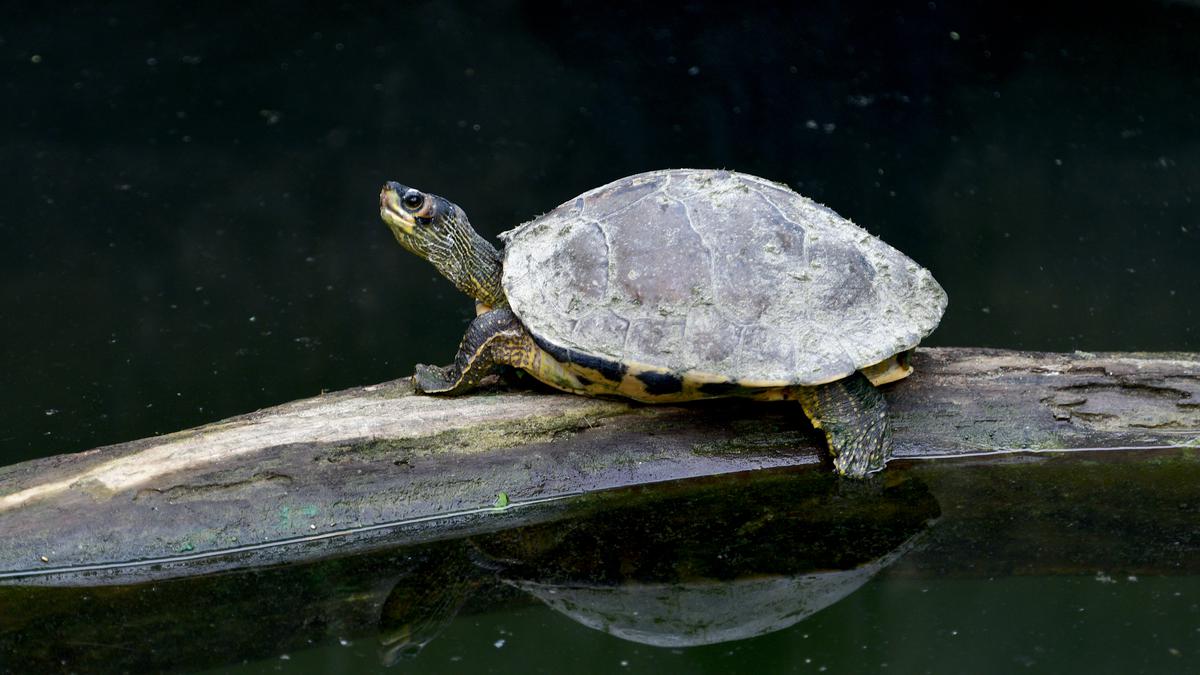
A thousand turtles to be released for a cleaner Ganga at Varanasi
The Hindu
As part of its multi-pronged efforts to clean and rejuvenate the Ganges river, hundreds of turtles will be released into the river in Varanasi district of Uttar Pradesh over the next two months
As part of its multi-pronged efforts to clean and rejuvenate the Ganges river, hundreds of turtles will be released into the river in Varanasi district of Uttar Pradesh over the next two months. Under a joint aegis of the Namami Gange Programme, the Forest and Wildlife Department, and the Wildlife Institute of India (WII), turtles hatched at one of India’s first breeding and rehabilitation centres for turtles situated in Varanasi, will improve the cleanliness of the Ganga. The river is polluted by the disposal of half-burnt dead bodies, rotten meat and garlands of flowers that are thrown. into it.
“Since 2017, we have released roughly 5,000 turtles. This year also, 1,000 turtles will be released, aimed at strengthening the cleanliness of the Ganges,” Aashish Panda, a biologist with the WII who works at the turtle rehab centre, said.
Also read | Guardians of the Ganga: task force keeps a watchful eye on the river
Set up in the late 1980s under the Ganga Action Plan (GAP), the centre has so far released over 40,000 turtles; roughly 28,000 turtles were released in the first phase of the GAP. The centre received renewed attention after the launch of the Namami Gange Programme, a flagship initiative of the Central government, in 2014, to accomplish the twin objectives of abatement of pollution, and the conservation and rejuvenation of the river. Since 2017, the WII and the Forest Department have renewed their efforts to release hatched turtles.
At the centre, roughly a dozen species, both herbivores and carnivores, are nurtured. The Forest and Wildlife Department’s team brings turtle eggs from the coastal areas of the Chambal region. The turtle eggs, which are monitored for 70 days, are kept in a room that is fully adapted for hatching. After filling the ground with water and placing bricks atop, the eggs are buried inside sand in wooden boxes. Only 30 eggs are kept in a box. Hatching is completed at temperatures ranging from 27 to 30 degrees Celsius between June and July, and after which the turtles are monitored in an artificial pond for two years before they are released in the river.
“The quality of water in the Ganga has improved, and definitely turtles have a role as they feed on meat and waste products thrown in the river. Improvement in biochemical demand (BOD), faecal coliform (FC) and dissolved oxygen (DO) was found in river water quality checks,” Rajesh Shukla, Convenor of the Namami Gange Programme in the Kashi region, said.
The U.P. Government has also said the assessment found that the pH level of the water at different locations in the State, including in Varanasi, met the water quality criteria for bathing, while the DO, BOD and FC levels improved at 16, 14 and 18 out of 20 locations, respectively.











